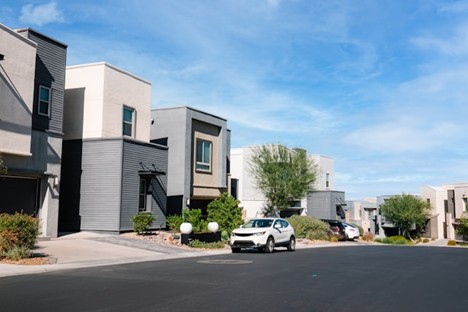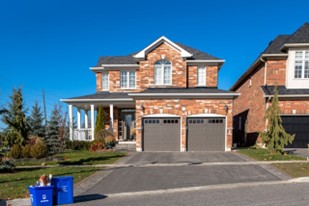
When it comes to maintaining a home or commercial property, the exterior plays a critical role in first impressions, yet it’s often one of the most neglected areas in regular upkeep. While skipping exterior cleaning might not seem like a big deal initially, it can lead to serious long-term consequences, including diminished curb appeal and even structural issues. Over time, the accumulation of dirt, organic debris, and trapped moisture creates the perfect environment for mold, mildew, and material degradation to take hold.
Enlisting professional services around Ann Arbor for pressure washing can make a significant difference in restoring and preserving the health and beauty of your property.
In the article below, we take a closer look at how exterior buildup contributes to hidden damage, why consistent maintenance is essential, and actionable steps you can take to protect your investment.
Your home’s exterior faces constant exposure to the elements - rain, sun, wind, pollution, and airborne particles. Over weeks and months, this exposure leads to the accumulation of dust, debris and moisture.
Dust settles on surfaces, trapping moisture and creating a breeding ground for microorganisms. Leaves, pollen, bird droppings, and other natural materials can cling to siding, gutters, and roofs. Rain, dew, and humidity keep surfaces damp, encouraging microbial growth.
When these factors combine, mold and mildew often develop, especially in shaded or poorly ventilated areas. Left unchecked, this microbial growth can penetrate surfaces, damage materials, and eventually cause costly structural problems.
Mold and mildew are types of fungi that thrive in moist environments. Though they are related, they have distinct characteristics:
Mildew typically appears as a powdery or fluffy white, gray, or yellowish growth. It usually affects flat surfaces and is easier to clean.
Mold tends to be fuzzy or slimy and comes in various colors including black, green, and brown. Mold can penetrate deeper into surfaces and is more difficult to eradicate.
Both can grow on a variety of exterior materials, including wood, vinyl siding, brick, stone, and even gutters and roofs.
While mold and mildew on your exterior might seem purely cosmetic, their presence can affect your property in several ways. Dark stains and patches mar the look of your home, reducing curb appeal and potentially lowering property value.
Mold spores can become airborne and trigger allergic reactions or respiratory issues, especially in sensitive individuals. Though outdoor mold is less harmful than indoor infestations, it can still contribute to poor air quality near your home.
Fungal growth weakens surfaces, accelerating wear and tear.
The presence of mold and mildew is often an early warning sign of moisture problems that, if ignored, can cause significant structural damage.
Mold and mildew love wood because it retains moisture and provides nutrients. Prolonged fungal growth on wooden siding, fascia boards, decks, or trim can lead to wood rot - a condition where the wood fibers break down and lose strength.
Signs to Watch For: Soft, spongy wood; discoloration; peeling paint.
Consequences: Rotting wood compromises structural elements, leading to costly repairs or replacements.
Mold and mildew can cause paint to blister, peel, or discolor. When paint fails, the underlying surface is exposed to moisture and UV damage, accelerating deterioration.
Signs to Watch For: Bubbling, flaking, or chalky paint surfaces.
Consequences: Loss of protective coatings means more frequent repainting and higher maintenance costs.
Vinyl, fiber cement, and composite sidings can harbor mold and mildew in their textured surfaces or seams, leading to staining and material breakdown. Similarly, roof shingles can become brittle or warped due to fungal growth combined with moisture damage.
Signs to Watch For: Stains, cracking, warping, or granule loss on shingles.
Consequences: Reduced effectiveness of siding or roofing can lead to leaks, drafts, and energy loss.

Leaves and organic debris often collect in gutters, retaining moisture and providing a perfect habitat for mold and mildew. When gutters become clogged or corroded, water doesn’t drain properly, potentially causing:
Ignoring exterior cleaning may save time initially but often leads to greater expenses down the line:
Increased Repair Costs: Replacing rotten wood, siding, or roofing materials can cost thousands of dollars.
Frequent Repainting: Mold-damaged paint needs more frequent repainting, raising maintenance costs.
Lower Property Value: A home with visible mold, stains, or structural damage loses market appeal.
Health-Related Expenses: Allergies or respiratory issues caused by outdoor mold spores can increase medical costs for residents.
Investing in routine exterior cleaning is far more cost-effective than tackling major repairs or dealing with health concerns.
The good news is that you can dramatically reduce the risk of mold, mildew, and structural damage by adopting a few preventive strategies:
Cleaning your home’s exterior annually or bi-annually removes dirt, debris, and microbial growth before it causes damage. Techniques can include gentle washing with appropriate cleaning solutions or specialized treatments for mold and mildew.
Keep gutters free of leaves and debris to ensure proper drainage. Clean them regularly and inspect for damage or corrosion.
Trim trees and shrubs that block sunlight or airflow to your home’s exterior, as shaded, damp areas encourage fungal growth.
Look for early signs of mold, peeling paint, or wood softening and address them quickly to prevent worsening damage.
Consider applying mold-resistant paints or sealants to vulnerable surfaces. These coatings help prevent fungal colonization and extend the life of your exterior finishes.
While some homeowners take a DIY approach to exterior maintenance, there are significant benefits to hiring professionals for the job, especially when dealing with stubborn buildup, mold, mildew, or delicate surfaces. Professional exterior cleaning services bring expertise, equipment, and safety protocols that ensure a deeper, longer-lasting clean without the risks of damage or injury.
Here’s why turning to the pros can be the smartest move:
Specialized Knowledge: Professionals understand how different materials like vinyl siding, brick, stucco, and wood, respond to specific cleaning agents and methods. They use the right products and techniques to avoid damage while effectively eliminating stains and biological growth.
Commercial-Grade Equipment: Experts use high-performance equipment designed to deliver consistent results..
Time-Saving Convenience: What could take a homeowner an entire weekend (or longer) can often be completed by a professional team in just a few hours, freeing up your time and ensuring a job well done.
Enhanced Safety: Exterior cleaning involves ladders, chemicals, and potentially slippery surfaces. Professionals are trained in safe work practices and have the right gear to protect themselves and your property.
Thorough and Lasting Results: From eliminating unsightly stains to removing harmful mold and mildew, a professional clean restores curb appeal and extends the life of your exterior materials - making it a valuable investment in your property’s longevity.
While light upkeep like rinsing or brushing off surface debris is fine for in between visits, hiring a professional ensures your home’s exterior stays clean, healthy, and protected year-round.
The exterior of your property is more than just curb appeal - it’s the first line of defense against environmental stressors. Neglecting regular cleaning and maintenance allows mold, mildew, and moisture to take hold, quietly undermining your home’s structural integrity and value.
By understanding the risks and committing to routine care, you protect your investment and enjoy a healthier, more beautiful living space. Whether you choose professional services or DIY methods, regular exterior cleaning is a smart, proactive step that saves money, preserves your property, and keeps your home safe for years to come.